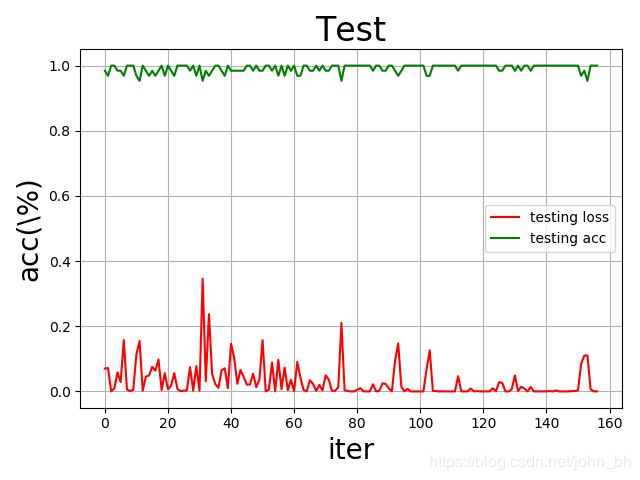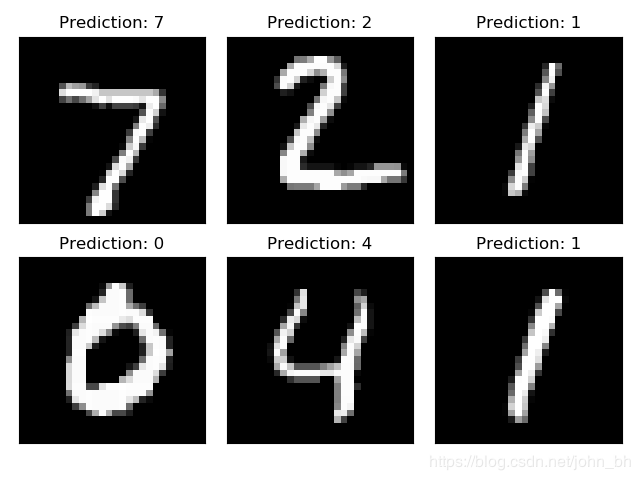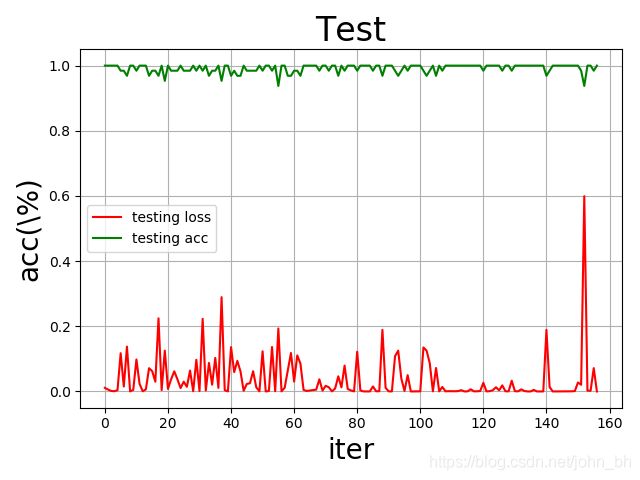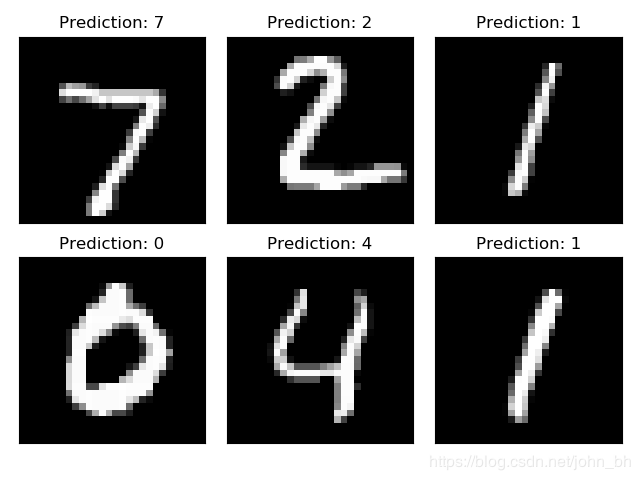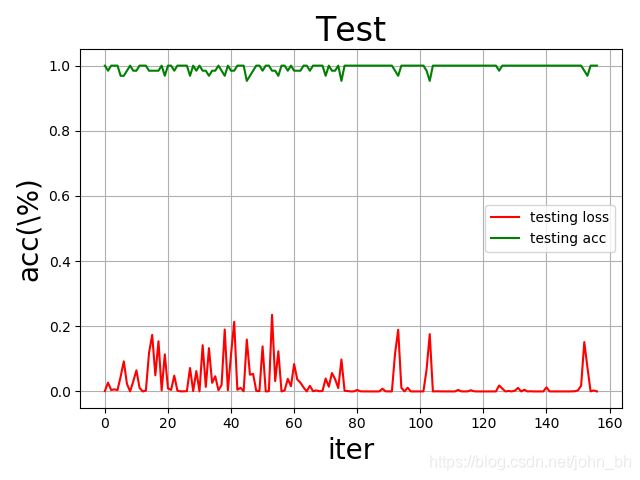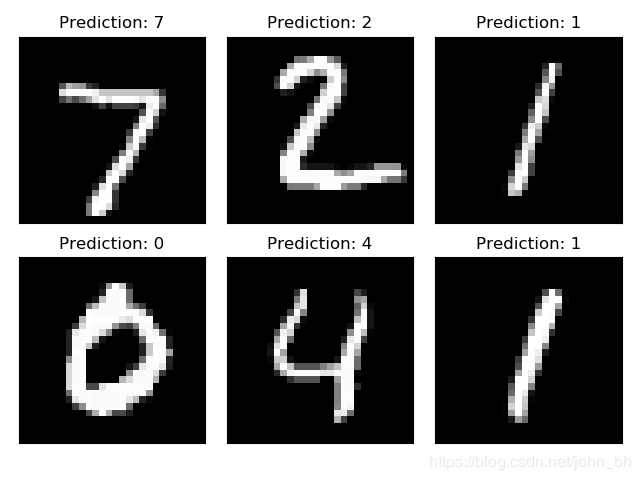Pytorch实战之MNIST识别
转载请注明作者和出处: http://blog.csdn.net/john_bh/
在本文中,将在PyTorch中构建一个简单的卷积神经网络,并在MNIST数据集训练它识别手写数字。
文章目录
- 1. MNIST Data
- 2. Load Data
- 3. 定义CNN
- 4. Train & Test
1. MNIST Data
MNIST包含70,000张手写数字图像: 60,000张用于训练,10,000张用于测试。图像是灰度的,28x28像素的,并且居中的,以减少预处理和加快运行。MNIST Data DownLoad
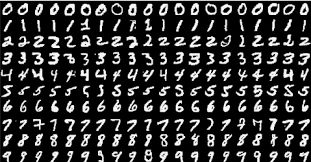
2. Load Data
新建 DealData.py文件,处理MNIST Data, 分为两种处理方法:
- 先下载MNIST数据集到本地,自己编写处理代码;
- 使用
torchvision.datasets处理MNIST。
代码实现如下:
# -*- coding:utf-8 -*-
import os
import gzip
import numpy as np
from torchvision import transforms
from torchvision.datasets import mnist
import matplotlib.pyplot as plt
from torch.utils.data import DataLoader
def load_data_minist(data_folder):
files = [
'train-labels-idx1-ubyte.gz', 'train-images-idx3-ubyte.gz',
't10k-labels-idx1-ubyte.gz', 't10k-images-idx3-ubyte.gz']
paths = []
for fname in files:
paths.append(os.path.join(data_folder,fname))
with gzip.open(paths[0], 'rb') as lbpath:
y_train = np.frombuffer(lbpath.read(), np.uint8, offset=8)
with gzip.open(paths[1], 'rb') as imgpath:
x_train = np.frombuffer(imgpath.read(), np.uint8, offset=16).reshape(len(y_train), 28, 28)
with gzip.open(paths[2], 'rb') as lbpath:
y_test = np.frombuffer(lbpath.read(), np.uint8, offset=8)
with gzip.open(paths[3], 'rb') as imgpath:
x_test = np.frombuffer(imgpath.read(), np.uint8, offset=16).reshape(len(y_test), 28, 28)
return (x_train, y_train), (x_test, y_test)
def load_data(data_folder,data_name,label_name):
"""
:param data_folder: 文件目录
:param data_name: 数据文件名
:param label_name: 标签数据文件名
:return:
"""
with gzip.open(os.path.join(data_folder,label_name), 'rb') as lbpath: # rb表示的是读取二进制数据
y = np.frombuffer(lbpath.read(), np.uint8, offset=8)
with gzip.open(os.path.join(data_folder,data_name), 'rb') as imgpath:
x = np.frombuffer(imgpath.read(), np.uint8, offset=16).reshape(len(y), 28, 28)
return (x, y)
class DealDataSet():
"""
"""
def __init__(self,folder,data_name,label_name,transform):
(X_set,Y_set)=load_data(folder,data_name,label_name)# 其实也可以直接使用torch.load(),读取之后的结果为torch.Tensor形式
self.X_set=X_set
self.Y_set=Y_set
self.transform=transform
def __getitem__(self,index):
img,target=self.X_set[index],int(self.Y_set[index])
if self.transform is not None:
img=self.transform(img)
return img,target
def __len__(self):
return len(self.X_set)
def load_data_torch():
# 预处理=>将各种预处理组合在一起
data_tf = transforms.Compose(
[transforms.ToTensor(),
transforms.Normalize([0.5], [0.5])])
# 使用内置函数下载mnist数据集
train_set = mnist.MNIST('./MNIST_data', train=True, transform=data_tf, download=True)
test_set = mnist.MNIST('./MNIST_data', train=False, transform=data_tf, download=True)
return (train_set,test_set)
def show_example_img():
train_set, test_set = load_data_torch()
train_data = DataLoader(train_set, batch_size=64, shuffle=True)
test_data = DataLoader(test_set, batch_size=64, shuffle=False)
examples = enumerate(test_data)
batch_idx, (example_data, example_targets) = next(examples)
fig = plt.figure()
for i in range(6):
plt.subplot(2, 3, i + 1)
plt.tight_layout()
plt.imshow(example_data[i][0], cmap='gray', interpolation='none')
plt.title("Ground Truth: {}".format(example_targets[i]))
plt.xticks([])
plt.yticks([])
plt.show()
def show_example_targets():
train_set, test_set = load_data_torch()
train_data = DataLoader(train_set, batch_size=64, shuffle=True)
test_data = DataLoader(test_set, batch_size=64, shuffle=False)
examples = enumerate(test_data)
batch_idx, (example_data, example_targets) = next(examples)
print(example_targets)
print(example_data.shape)
if __name__=="__main__":
show_example_img()
show_example_targets()
show_example_img()结果:
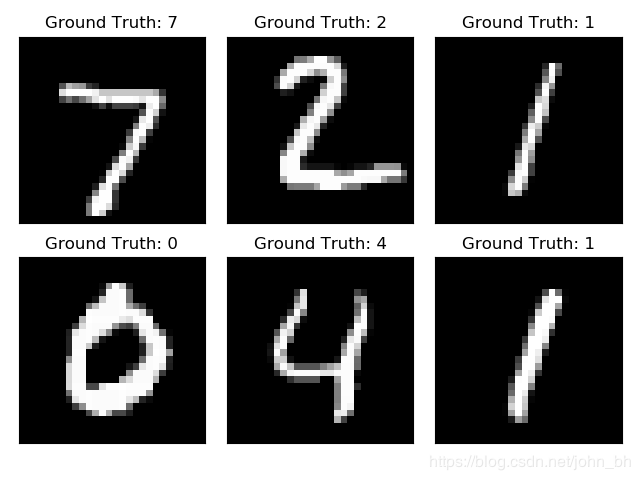
show_example_targets()结果:
tensor([7, 2, 1, 0, 4, 1, 4, 9, 5, 9, 0, 6, 9, 0, 1, 5, 9, 7, 3, 4, 9, 6, 6, 5,4, 0, 7, 4, 0, 1, 3, 1, 3, 4, 7, 2, 7, 1, 2, 1, 1, 7, 4, 2, 3, 5, 1, 2, 4, 4, 6, 3, 5, 5, 6, 0, 4, 1, 9, 5, 7, 8, 9, 3])
torch.Size([64, 1, 28, 28])
3. 定义CNN
新建 model.py文件,编写CNN,具体代码如下:
# -*- coding:utf-8 -*-
from torch import nn
# define Net
class Net(nn.Module):
def __init__(self):
super(Net, self).__init__()
self.layer1 = nn.Sequential(
nn.Conv2d(1, 16, kernel_size=3), # 16, 26 ,26
nn.BatchNorm2d(16),
nn.ReLU(inplace=True))
self.layer2 = nn.Sequential(
nn.Conv2d(16, 32, kernel_size=3), # 32, 24, 24
nn.BatchNorm2d(32),
nn.ReLU(inplace=True),
nn.MaxPool2d(kernel_size=2, stride=2)) # 32, 12,12 (24-2) /2 +1
self.layer3 = nn.Sequential(
nn.Conv2d(32, 64, kernel_size=3), # 64,10,10
nn.BatchNorm2d(64),
nn.ReLU(inplace=True))
self.layer4 = nn.Sequential(
nn.Conv2d(64, 128, kernel_size=3), # 128,8,8
nn.BatchNorm2d(128),
nn.ReLU(inplace=True),
nn.MaxPool2d(kernel_size=2, stride=2)) # 128, 4,4
self.fc = nn.Sequential(
nn.Linear(128 * 4 * 4, 1024),
nn.ReLU(inplace=True),
nn.Linear(1024, 128),
nn.ReLU(inplace=True),
nn.Linear(128, 10))
def forward(self, x):
x = self.layer1(x)
x = self.layer2(x)
x = self.layer3(x)
x = self.layer4(x)
x = x.view(x.size(0), -1)
x = self.fc(x)
return x
4. Train & Test
这里写了一个完整的训练代码,包括:参数的设定,加载MNIST数据,使用网络,定义损失函数和优化器,训练网络,保存模型,保存训练过程中的loss和acc并做可视化,设置验证集(测试集)。具体代码如下:
# -*- coding:utf-8 -*-
from torch.utils.data import DataLoader
import torch
from torch import nn
from torch.autograd import Variable
from torch import optim
from DealDataSet import load_data_torch
from model import Net
import os
import matplotlib.pyplot as plt
import numpy as np
#Parameters
max_epoch=3
learning_rate=1e-1
momentum=0.9
batch_size=64
display_step=100
mode_dir="./models/model1"
device = torch.device("cuda" if torch.cuda.is_available() else "cpu")
#Network Parameters
num_input=784 # MNIST data input (img shape: 28*28)
num_classes=10 # MNIST total classes (0-9 digits)
dropout=0.75 # Dropout, probability to keep units
#load data
train_set,test_set=load_data_torch()
train_data = DataLoader(train_set, batch_size=batch_size, shuffle=True)
test_data = DataLoader(test_set, batch_size=batch_size, shuffle=False)
# Initialize the model
net = Net()
net.to(device)
# Define loss function and optimizer
criterion = nn.CrossEntropyLoss()
optimizer = optim.SGD(net.parameters(), lr=learning_rate,momentum=momentum)
def draw_train_process(title,iters,costs,accs,label_cost,lable_acc):
plt.title(title, fontsize=24)
plt.xlabel("iter", fontsize=20)
plt.ylabel("acc(\%)", fontsize=20)
plt.plot(iters, costs,color='red',label=label_cost)
plt.plot(iters, accs,color='green',label=lable_acc)
plt.legend()
plt.grid()
plt.show()
def showTestResult(test_data):
examples = enumerate(test_data)
batch_idx, (example_data, example_targets) = next(examples)
with torch.no_grad():
output = net(example_data)
fig = plt.figure()
for i in range(6):
plt.subplot(2, 3, i + 1)
plt.tight_layout()
plt.imshow(example_data[i][0], cmap='gray', interpolation='none')
plt.title("Prediction: {}".format(
output.data.max(1, keepdim=True)[1][i].item()))
plt.xticks([])
plt.yticks([])
plt.show()
def train():
global net
# 如果有模型则加载
if os.path.exists(mode_dir):
print("Use pre_mode")
net.load_state_dict(torch.load(os.path.join(mode_dir,'model.pth')))
optimizer.load_state_dict(torch.load(os.path.join(mode_dir,'optimizer.pth')))
else:
os.makedirs(os.path.join(os.getcwd(),mode_dir))
train_losses=[]
train_acces=[]
# epoch_size = int(mnist.train.num_examples / batch_size)
for epoch in range(max_epoch):
net = net.train() # 执行网络训练
for step, (img,label) in enumerate(train_data):
img = Variable(img)
img = img.to(device)
label = label.to(device)
label = Variable(label)
optimizer.zero_grad() # Gradient clear
output = net(img)
loss = criterion(output, label) # Calculate loss
loss.backward() # Backpropagation
optimizer.step() # Update gradient
_, pred = torch.max(output.data,1) # Calculation accuracy
num_correct = (pred == label).sum().item()
train_acc = num_correct / img.shape[0]
# Record loss and accuracy
train_loss = loss.item()
train_losses.append(train_loss )
train_acces.append(train_acc*100 )
if(step+1)%display_step ==0 or (step+1) == len(train_data):
print('Epoch:{} [{}/{}], Loss:{:.4f}, Acc:{}'.format(epoch,step+1,len(train_data),train_loss,train_acc))
# Save model
torch.save(net.state_dict(), os.path.join(mode_dir,'model.pth'))
torch.save(optimizer.state_dict(),os.path.join(mode_dir,'optimizer.pth'))
print('Epoch {}: Train Loss: {} Train Accuracy: {} '.format(epoch + 1, np.mean(train_losses), np.mean(train_acces)))
# Set up validation set
print("############## val this epoch ##############")
test()
# Draw loss and acc charts
draw_train_process('training', range(len(train_losses)), train_losses, train_acces, 'training loss', 'training acc')
def test():
net.eval()
test_loss=[]
test_acc=[]
with torch.no_grad(): # The network does not update the gradient during evaluation
for i,(img,label) in enumerate(test_data):
output=net(img)
test_loss.append(criterion(output, label))
_,test_pred=torch.max(output.data,1) # test_pred = output.data.max(1)[1]
num_correct = (test_pred == label).sum().item()
test_acc.append(num_correct / img.shape[0])
# test_acc += label.size(0)
# test_acc.append ((test_pred == label).sum().item()) #test_acc.append(test_pred.eq(label.data.view_as(test_pred)).sum())
print("avg loss:{}, avg acc:{}".format(np.mean(test_loss),np.mean(test_acc)))
#Draw loss and acc charts
draw_train_process("Test", range(len(test_loss)), test_loss, test_acc, "testing loss", "testing acc")
showTestResult(test_data)
if __name__=="__main__":
train()
Epoch:0 [100/938], Loss:0.0004, Acc:1.0
Epoch:0 [200/938], Loss:0.0572, Acc:0.984375
Epoch:0 [300/938], Loss:0.0010, Acc:1.0
Epoch:0 [400/938], Loss:0.0344, Acc:0.984375
Epoch:0 [500/938], Loss:0.0047, Acc:1.0
Epoch:0 [600/938], Loss:0.0010, Acc:1.0
Epoch:0 [700/938], Loss:0.0003, Acc:1.0
Epoch:0 [800/938], Loss:0.0005, Acc:1.0
Epoch:0 [900/938], Loss:0.0439, Acc:0.984375
Epoch:0 [938/938], Loss:0.0022, Acc:1.0
Epoch 1: Train Loss: 0.011573510118567332 Train Accuracy: 0.9966184701492538
############## val this epoch ##############
avg loss:0.030577583238482475, avg acc:0.9914410828025477
Epoch:1 [100/938], Loss:0.0000, Acc:1.0
Epoch:1 [200/938], Loss:0.0001, Acc:1.0
Epoch:1 [300/938], Loss:0.0247, Acc:0.984375
Epoch:1 [400/938], Loss:0.0002, Acc:1.0
Epoch:1 [500/938], Loss:0.0114, Acc:1.0
Epoch:1 [600/938], Loss:0.1161, Acc:0.984375
Epoch:1 [700/938], Loss:0.0000, Acc:1.0
Epoch:1 [800/938], Loss:0.0003, Acc:1.0
Epoch:1 [900/938], Loss:0.0000, Acc:1.0
Epoch:1 [938/938], Loss:0.0003, Acc:1.0
Epoch 2: Train Loss: 0.011195699965508517 Train Accuracy: 0.9966767723880597
############## val this epoch ##############
avg loss:0.03695254400372505, avg acc:0.9913415605095541
Epoch:2 [100/938], Loss:0.1651, Acc:0.984375
Epoch:2 [200/938], Loss:0.0689, Acc:0.984375
Epoch:2 [300/938], Loss:0.0001, Acc:1.0
Epoch:2 [400/938], Loss:0.0031, Acc:1.0
Epoch:2 [500/938], Loss:0.0114, Acc:1.0
Epoch:2 [600/938], Loss:0.3162, Acc:0.9375
Epoch:2 [700/938], Loss:0.0206, Acc:0.984375
Epoch:2 [800/938], Loss:0.0003, Acc:1.0
Epoch:2 [900/938], Loss:0.0047, Acc:1.0
Epoch:2 [938/938], Loss:0.0562, Acc:0.96875
Epoch 3: Train Loss: 0.011290731870277657 Train Accuracy: 0.9967073116560057
############## val this epoch ##############
avg loss:0.027084697037935257, avg acc:0.9937300955414012
